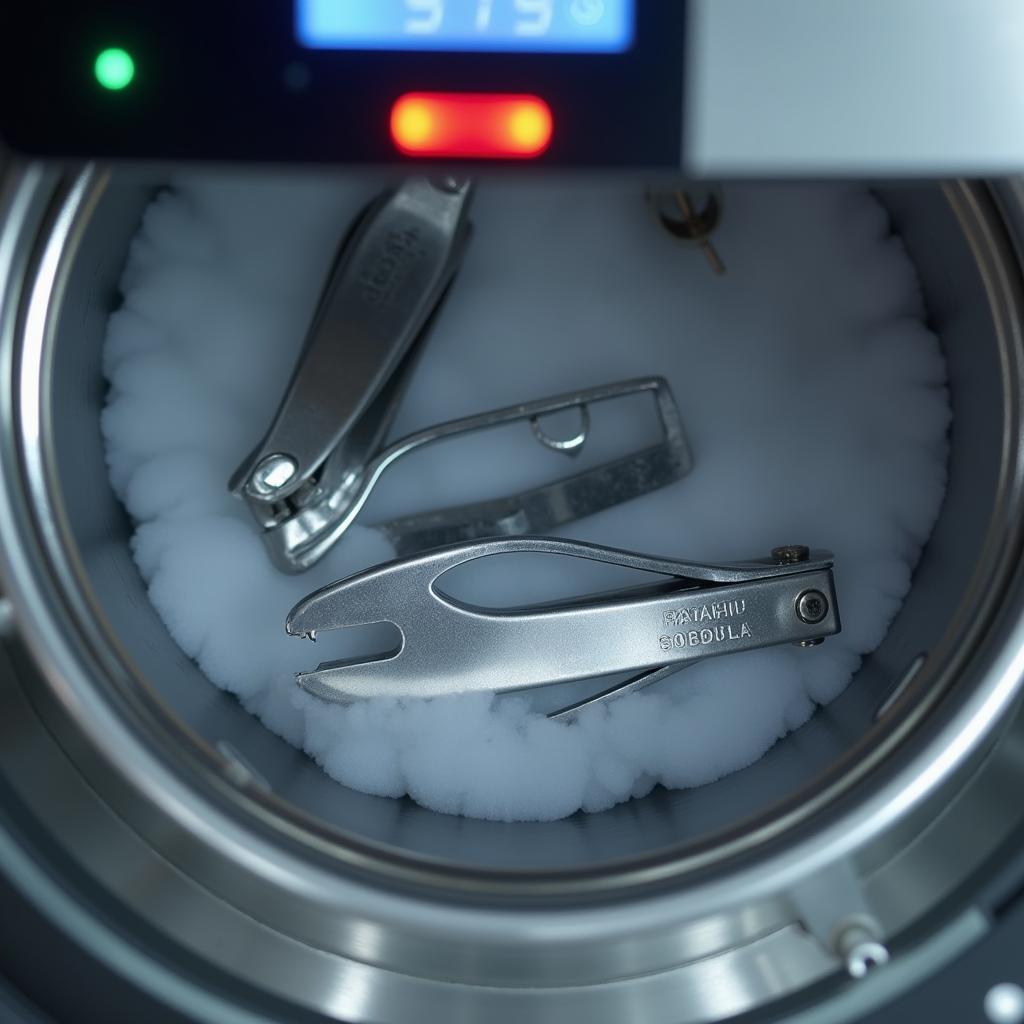Sterilization of nail care tools is paramount for maintaining hygiene and preventing the spread of infections. This guide explores the importance of proper sterilization techniques, various methods, and best practices for ensuring a safe and healthy nail care experience.
Why Sterilize Nail Care Tools?
Proper sterilization of nail care tools is crucial for preventing the transmission of bacteria, fungi, and viruses. These microorganisms can cause various infections, some of which can be severe. Using unsterilized tools can lead to infections such as onychomycosis (nail fungus), paronychia (infection around the nail), and even more serious bloodborne illnesses like hepatitis B and C. By sterilizing your tools, you protect yourself and your clients from these potential health risks.
Clients expect and deserve a clean and safe environment. Sterilizing your tools demonstrates professionalism and builds trust, assuring clients that their well-being is your top priority. sterilization-of-nail-care-tools-and-equipment
Understanding the Difference Between Cleaning, Sanitizing and Sterilizing
While often used interchangeably, cleaning, sanitizing, and sterilizing are distinct processes. Cleaning involves removing visible debris and dirt. Sanitizing reduces the number of microorganisms to a safe level. Sterilization, however, eliminates all forms of microbial life, including spores, ensuring complete safety. It’s important to understand these differences to implement the most effective hygiene practices.
Methods of Sterilization for Nail Care Tools
Several effective methods are available for sterilizing nail care tools. Choosing the right method depends on the type of tool and the resources available.
Autoclaving
Autoclaving uses high-pressure steam to kill all microorganisms. It is considered the gold standard for sterilization in many industries, including healthcare and nail care. Autoclaves are highly effective but can be expensive. sterilization-and-sanitation-of-nail-care-tools
Dry Heat Sterilization
Dry heat sterilization uses high temperatures for an extended period to kill microorganisms. While effective, this method can damage some tools over time.
Chemical Sterilization
Chemical sterilants, such as glutaraldehyde or hydrogen peroxide, can also be used for sterilization. These chemicals require careful handling and proper ventilation to ensure safety.
Best Practices for Sterilizing Nail Care Tools
Regardless of the chosen sterilization method, following best practices is crucial for ensuring efficacy.
-
Clean Before Sterilizing: Always clean tools thoroughly before sterilization to remove any debris that could interfere with the process.
-
Follow Manufacturer’s Instructions: Adhere to the manufacturer’s recommendations for sterilization procedures, including time and temperature settings.
-
Store Sterilized Tools Properly: Store sterilized tools in a clean, dry, and covered container to prevent contamination.
-
Regularly Test Sterilization Equipment: Periodically test autoclaves and other sterilization equipment to ensure they are functioning correctly.
How to Sanitize Tools in Nail Care
how-to-sanitize-tools-in-nail-care Sanitizing is an important step, especially when sterilization isn’t feasible. Here’s a breakdown:
- Wash: Thoroughly wash tools with soap and water.
- Disinfect: Soak tools in an EPA-registered disinfectant for the recommended time.
- Rinse & Dry: Rinse tools with clean water and air dry completely.
“Proper sterilization is non-negotiable in the nail care industry. It’s a fundamental practice that protects both clients and professionals,” says Dr. Emily Carter, a leading dermatologist specializing in skin and nail health. “Investing in proper sterilization equipment and adhering to strict protocols is a testament to a salon’s commitment to safety and quality.”
Conclusion
Sterilization of nail care tools is essential for preventing infections and maintaining a healthy environment. By understanding the importance of sterilization, implementing proper techniques, and following best practices, nail care professionals can ensure the safety and well-being of their clients. Sterilization is an investment in both client health and professional reputation, contributing to a thriving and trustworthy nail care practice. sterilization-nail-care-tools
FAQ
- How often should I sterilize my nail care tools? After each use.
- What is the most effective sterilization method? Autoclaving.
- Can I use boiling water for sterilization? No, boiling does not eliminate all microorganisms.
- How do I store sterilized tools? In a clean, dry, covered container.
- What are the signs of a nail infection? Redness, swelling, pain, and pus.
- How can I choose a reputable nail salon? Look for salons that prioritize hygiene and sterilization.
- What should I do if I suspect a nail infection? Consult a doctor or dermatologist.
For further information, see our articles on sterilization tools and equipment in nail care.
Need help with car diagnostics or have questions about our services? Contact us via WhatsApp: +1(641)206-8880, Email: [email protected] or visit us at 910 Cedar Lane, Chicago, IL 60605, USA. Our customer support team is available 24/7.

